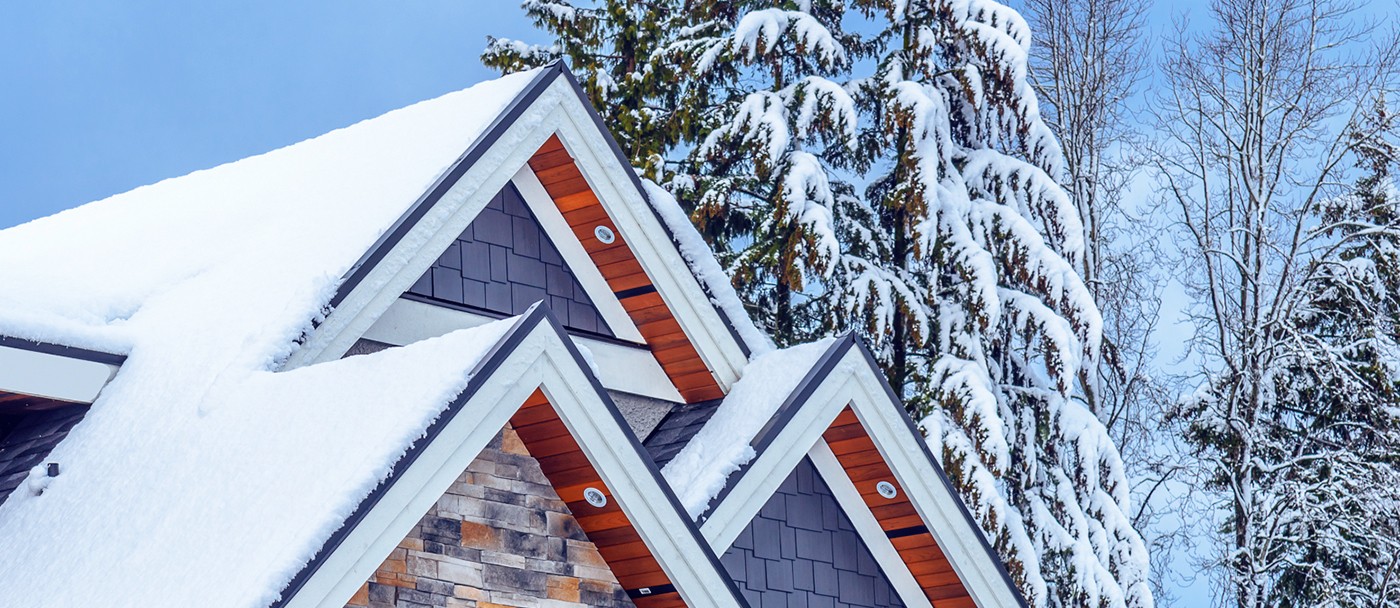Do I have to remove the snow from my roof?

You’re in the depth of winter, with plenty of snow covering the landscape. You start to notice some of your neighbours removing snow off their roofs. Are they correct in doing this? Should I be doing this as well?
When deciding what is best for your roof, the answer is a bit more complicated than looking around your neighbourhood and seeing what everyone else is doing.
Some roof snow can actually be good. A layer of snow will offer your home a buffer from deep sub-zero temperatures. Besides, if the snow on your roof is sticking around longer than your neighbours’, then you know that your insulation is in good shape.
The two reasons for clearing roof snow are: excess weight stress and ice dams and icicles.
Excess weight stress
Most Canadian roofs are engineered to take on normal snow loads. So, you probably don’t need to clear the roof snow, unless there is excessive snowfall.
A metal roof will shed snow rather easily, while an asphalt-shingled roof will naturally hold on to the snow more, due to the gritty surface of the shingles. The pitch of the roof makes a difference as to how well the snow slides off.
When to remove the snow
The type of snow makes a difference: 30 cm (12 inches) of snow on your roof can differ in weight. Light fluffy snow is of no concern. However, as that 30 cm of light snow on your roof compresses naturally down to 15 cm (6 inches) and you get another 15 cm of snowfall on top, you now have 1 ½ times the weight. That weight is still within most roof tolerances. However, once you get to about 40-45 cm (16-18 inches) of roof snow, you should consider raking it down.
Sometimes, your house will tell you when there is too much weight on the roof. You need to be alert to warning signs such as unusual cracking sounds, warping of a ceiling, cracks appearing in the drywall, new water spots showing up in the ceiling or doors starting to jam when you try to shut them. If you notice any of these symptoms, you need to reduce the weight on the roof right away.
How to remove roof snow
For removing snow safely from on the ground, you can get a specific tool for clearing snow, called a roof rake. It comes with telescopic extensions up to 9 metres (about 30 feet) in length. Look for a roof rake that has small rollers or bumpers, or at least is plastic at the bottom so it doesn’t scrape the grit off your shingles or scratch the steel roof.
Priority #1 is using it to clear the snow off your overhangs. Then work your way up, by pulling small sections down each time from the bottom and working your way up slowly to the peak. It’s OK to leave a few inches of snow, and it is not necessary to get down to the roof surface. On two-storey homes, you may only be able to do the overhangs, but that at least helps in preventing ice jams. Call a professional if you need the top storey cleared.
TIP: you need to clear any snow around the vents to keep snow from entering your attic and to keep the airflow moving within.
The experts say that all snow removal done by homeowners needs to be done from the ground. No ladders, no getting up on the roof with shovels. The chances of slipping and falling are too great. They suggest that you contact a roofing company that offers this service instead.
If you insist on getting on the roof and shovelling the snow yourself, do it with a partner, secure your ladder to something solid that will hold it from sliding, and use non-metal shovels. Do not use any ice choppers, or any steel tool.
Warning: On older homes, you may have overhead power lines, and you need to be wary of waving a long metal pole too close to them.
Ice jams and icycles
Ice jams occur when the snow and ice on the roof melt. This melt occurs from escaping indoor heat (from poor insulation) or from outdoor temperature fluctuations (thaw cycle followed by freeze cycle). The melting snow moves towards the eaves where the temperatures are cooler and it re-freezes, leading to a build-up of ice and water.
This water can back up under the shingles and seep into your home. Removing the snow with the roof rake means there is little to melt in the first place and can eliminate this risk. Before the winter, you should clean the eavestroughs of leaves which will help keep water flowing to the downspout.
If you find that ice jams have formed, there are some processes that you can attempt if you do not want to call a professional. Professionals use steam and/or hot water to eliminate the jam.
If you try clearing the ice jam yourself, some suggest that you can use ice pucks to help bore holes in the ice to help loosen the ice from the shingles. Don’t be tempted to use hammers or such tools to break up the ice, as you may end up taking part of your shingles off with the ice.
If your house is prone to ice jams, some homeowners install heating cables before the winter. These are designed for melting snow and ice on the overhangs. There is some issue with the cost of electricity and electrical safety, so ask a lot of questions if you are considering this option.





